In the dynamic world of material science and engineering, understanding the subtleties of vibration test equipment is crucial for ensuring the structural integrity and performance of components under stress. This guide meticulously explores the spectrum of vibration testing methods and equipment, from electrodynamic shakers to servo-hydraulic systems, each suited for specific testing scenarios and objectives. Moreover, it addresses common operational challenges and provides strategic solutions to enhance testing accuracy. As technology advances and the demand for more resilient materials increases, the insights offered here become indispensable. The question then arises: how can one optimize the use of such sophisticated equipment to achieve the most reliable outcomes?
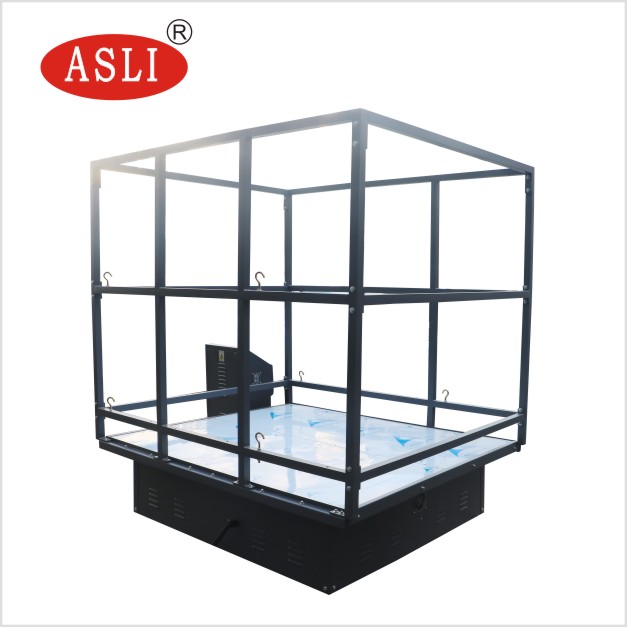
ASLI Simulated Transportation Vibration Test Equipment
Vibration test equipment comprises specialized systems designed to simulate real-world vibrations in a controlled setting to evaluate the durability and performance of materials and products. Central to the functioning of these systems is vibration analysis, which involves measuring and assessing vibration levels to ensure they meet the test specifications of the project. This process is critical for understanding how materials or products would behave under operational stresses.
To maintain accuracy and reliability, equipment calibration is routinely conducted. Calibration ensures that the vibration test equipment performs within the specified parameters, providing confidence in the test results. Vibration control is another pivotal aspect, focusing on managing and manipulating the vibration levels applied during testing. This control is necessary to mimic different environmental conditions accurately, thereby obtaining relevant data.
Data interpretation, the final step, involves analyzing the outcomes of the vibration tests. This phase is crucial as it translates raw data into actionable insights, guiding engineers and designers in making informed decisions about material selection, product design, and necessary improvements. Proper interpretation of this data ensures that the products are robust, safe, and fit for purpose, aligning with both industry standards and consumer expectations.
Engineers employ vibration testing equipment to assess how different materials and structures respond to vibrational forces. This process enables them to evaluate structural dynamics and material behavior, ensuring that products can withstand real-world conditions. Vibration testing is crucial in industries like aerospace, automotive, and construction where safety and durability are paramount.
Vibration analysis conducted through these tests helps in identifying potential design weaknesses and predicting possible failure modes. By understanding the frequency response of materials, engineers can make informed decisions to enhance product designs. Mechanical testing through induced vibrations simulates various stress scenarios a product might face during its lifecycle.
Here is a brief overview of the applications:
| Application Area | Key Benefit |
|---|---|
| Product Development | Ensures design meets required durability |
| Safety Testing | Identifies structural weaknesses |
| Research and Education | Enhances understanding of material properties |
Incorporating vibration testing in the development phase not only optimizes the design for performance but also significantly reduces the risk of failure in operational settings. This proactive approach in mechanical testing empowers manufacturers to deliver higher quality, more reliable products.
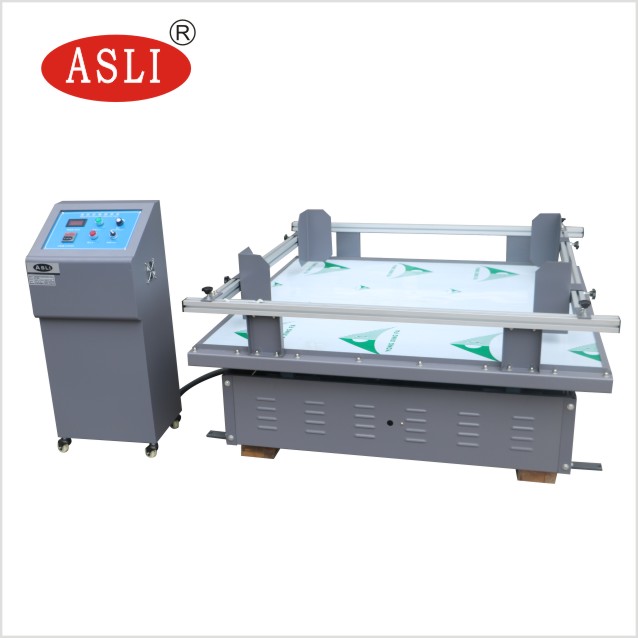
ASLI STA 1A 2A ASTM D999 Simulated Transport Vibration Tester
To simulate real-world conditions, vibration test equipment utilizes a shaking table or platform, which is driven by an electrodynamic shaker to produce controlled vibrations. This equipment setup is crucial for achieving high testing accuracy through precise vibration analysis and frequency control.
Here's how vibration test equipment operates effectively:
This controlled and methodical approach ensures that each product is well-tested under standardized yet customizable conditions before it reaches the consumer.
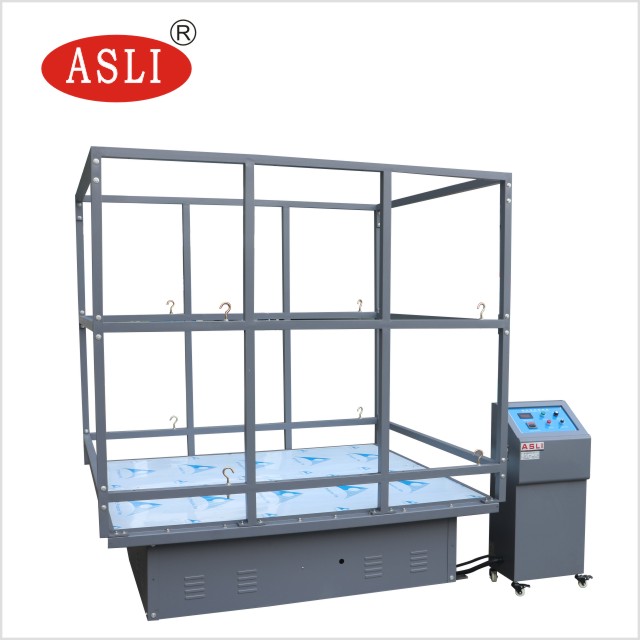
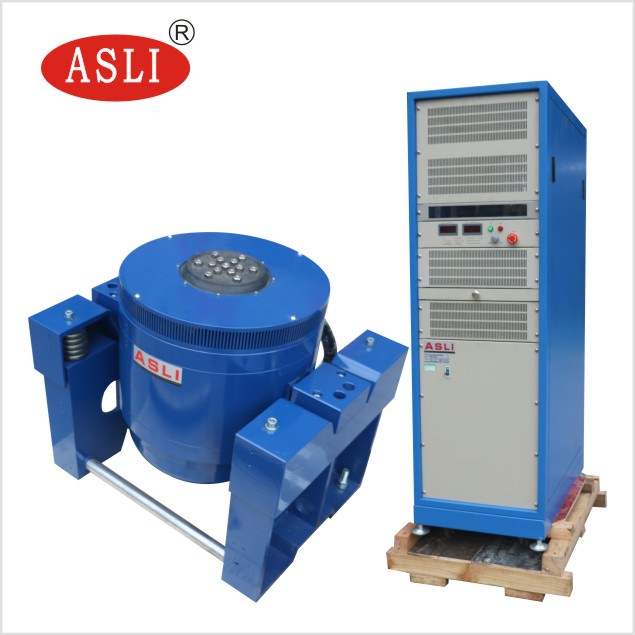
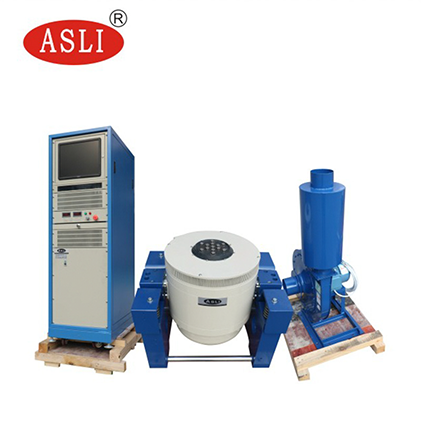
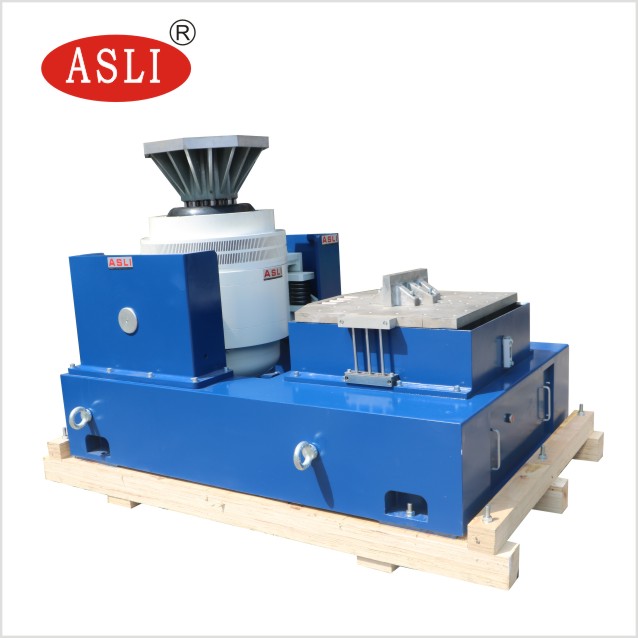
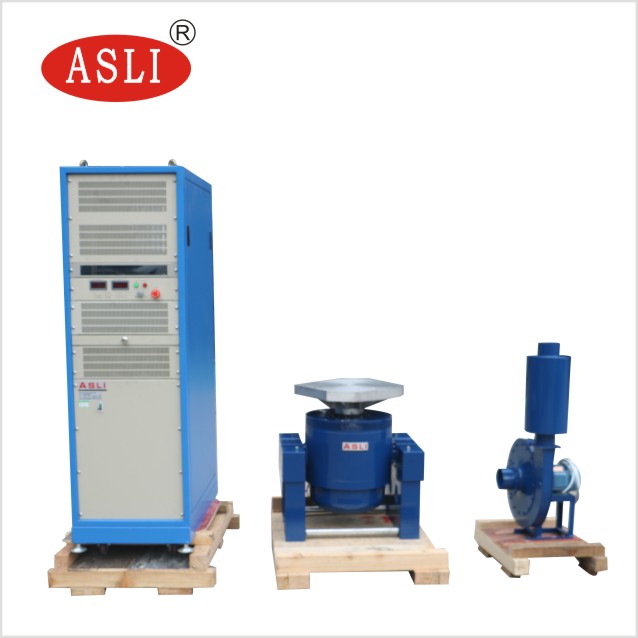
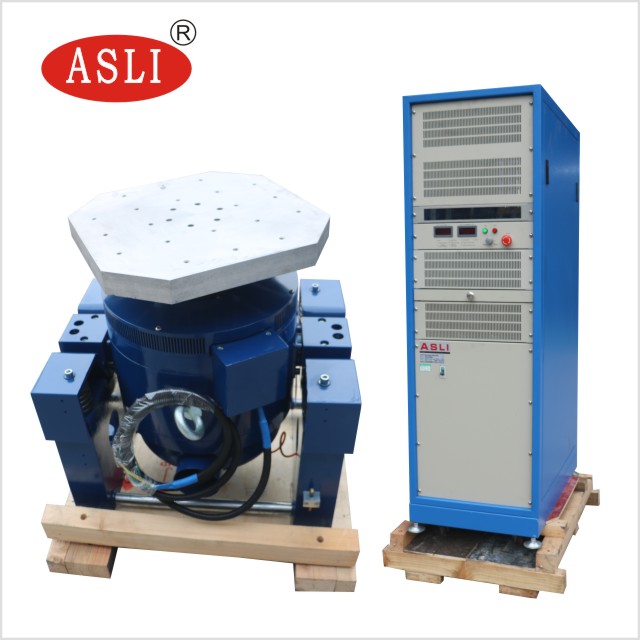
Vibration testing equipment varies widely in type and function, each suited to specific testing requirements.
Among these, Electrodynamic Vibration Shakers and Inertial Shaker Systems are commonly used for simulating real-world conditions on test specimens.
Additionally, Modal Testing Systems and 3D Vibration Test Systems provide advanced options for analyzing the dynamic behavior and structural integrity of components in multiple axes.
As the cornerstone of modern vibration test systems, electrodynamic vibration shakers employ electromagnetic forces to generate precise, controlled vibrations across a broad frequency spectrum. These systems are integral for achieving advanced vibration analysis, enhancing shaker technology, and ensuring robust vibration control across various industries. Their ability to simulate real-world scenarios makes them critical in the development and testing of products in aerospace, automotive, and electronics sectors.
Key aspects of electrodynamic vibration shakers include:
These features underscore their pivotal role in modern vibration simulation and testing protocols.
Building on the foundation set by electrodynamic vibration shakers, modal testing systems offer another sophisticated approach for evaluating the dynamic responses of structures under stress. These systems are integral in fields such as mechanical, civil, and aerospace engineering, where precise understanding of structural dynamics is crucial.
Modal testing systems function by applying a controlled vibration to the structure being tested. This is followed by an assessment of the structure's frequency response through sensors like accelerometers. The resultant data feeds into a modal analysis, creating a detailed model of the structure's dynamic behavior. This analysis reveals the mode shapes, which are the specific patterns of deformation that the structure undergoes under vibrational stress.
The benefits of employing modal testing systems are substantial. By enabling engineers to identify potential weaknesses and failure points, these systems facilitate targeted enhancements in design for improved structural integrity and performance. Moreover, experimental modal analysis helps in optimizing product designs to ensure safety and reliability under operational conditions. Thus, modal testing is not only a tool for validation but also a critical component of the design and improvement phases in product development.
Inertial shaker systems utilize inertial forces to conduct precise and controlled vibration testing across various industrial applications. These systems are pivotal for ensuring product durability and functionality by mimicking real-world stressors in a controlled environment. Primarily, they excel in applications demanding high precision and control, such as aerospace testing and automotive applications.
Inertial shaker systems are favored for their ability to provide accurate and repeatable results, which is crucial for effective vibration control and structural analysis. Their application spans several critical sectors:
Employing these systems supports comprehensive testing regimes that are critical to advancing technology and safety standards in multiple industries.
3D Vibration Test Systems revolutionize how industries conduct comprehensive and realistic product testing by simulating multidirectional forces. These systems enable precise vibration analysis and multi-axis testing, essential for real-world simulation and product optimization. Particularly in aerospace applications, the ability to mimic complex environmental forces ensures that components withstand harsh operational conditions.
| Feature | Benefit | Key Industries |
|---|---|---|
| Multi-axis Testing | Simulates complex real-world dynamics | Aerospace |
| Real-time Feedback | Enables immediate analysis adjustments | Consumer Electronics |
| High Precision | Ensures accurate results | Automotive |
| Customization | Tailors to specific testing needs | Aerospace |
| Durability | Withstands rigorous testing cycles | All mentioned |
Modal Testing Systems are crucial for analyzing the dynamic responses of structures to vibrational forces, ensuring reliability and safety across various industries. These systems are integral in assessing the structural dynamics of a variety of engineering applications, from skyscrapers to spacecraft. By conducting modal analysis, engineers can predict and enhance the dynamic behavior of structures, ultimately leading to safer and more efficient designs.
Here are four key aspects of modal testing systems:
Servo-Hydraulic Vibration Shakers provide robust solutions for testing large and heavy structures by utilizing hydraulic actuators to simulate real-world stress conditions. These systems are particularly adept at handling the stringent requirements of aerospace testing and assessing automotive durability with precision. The superior force output of hydraulic actuators makes them ideally suited for evaluating heavy components where conventional methods may falter.
These shakers are not only vital for their performance but also for their versatility across various fields requiring the simulation of high-stress environments on large structures. Their design ensures longevity and reliability under prolonged and intense testing cycles, a critical factor for industries where safety and performance are paramount.
| Feature | Benefit |
|---|---|
| High Force | Ideal for testing large-scale and heavy components |
| Durability | Withstands rigorous, long-term usage |
| Versatility | Applicable in aerospace, automotive, and civil engineering |

ASLI PCB Vibration Test Equipment
Utilizing vibration test equipment provides critical insights into the durability and performance of materials and products under varied stress conditions. This technology is fundamental in ensuring that products can withstand real-world environments, which is crucial for both producers and consumers.
By rigorously testing products, manufacturers can preemptively identify and rectify potential defects, thereby enhancing product reliability and safety before market release.
Here are four key benefits of using vibration test equipment:
Understanding how to apply vibration test equipment is the next step after appreciating its benefits. The process begins with selecting measurement points on the test object that are crucial for capturing relevant vibration data. These points typically represent areas of high stress or potential sources of vibration.
The choice of vibration sensors is pivotal; accelerometers, velocity transducers, and displacement probes are commonly employed based on the frequency response and types of vibrations expected. Setting up the test involves mounting these sensors securely and aligning them correctly to ensure accurate data capture.
This phase is critical for maintaining the integrity of vibration analysis and vibration monitoring throughout the testing phase. The instrumentation must be configured to record desired parameters such as sample rates and filter settings, which are essential for detailed structural dynamics studies.
The actual vibration test can be conducted using operational excitation or artificial methods like shaking tables or impact hammers, crucial for resonance testing. Collecting and analyzing the data with precision allows for an in-depth understanding of the vibratory behavior, providing insights into any resonant frequencies and structural responses.
This systematic approach ensures that each phase of vibration testing is controlled and efficient, leading to reliable and actionable results.

Several key considerations must be addressed when planning and executing vibration testing to ensure accurate and useful results. A rigorous approach to these consideration factors not only enhances the reliability of the data but also ensures that testing objectives are precisely met.
Here are the primary elements to consider:
Vibration testing methods are classified into various types, each designed to assess different aspects of an object's response to vibrational forces. These methods are essential tools in understanding structural dynamics and ensuring the reliability and safety of components in various engineering applications.
One fundamental approach is the free vibration test, which identifies natural frequencies and modes of vibration crucial for modal analysis. This method involves an initial perturbation and measures the decay in vibration characteristics, providing insight into the object's inherent vibrational properties without external interference.
Forced vibration testing, including shock and harmonic excitation tests, evaluates an object's frequency response. It applies known forces and measures how the object reacts, which is essential in designing systems that encounter predictable forces.
Random vibration testing addresses the complexity of real-world environments by using random signals to mimic operational conditions. This method is integral to vibration analysis as it helps predict how a component will perform under typical service conditions.
Steady-state and unsteady-state vibration testing focus on the behavior under continuous or changing vibrations, respectively. Steady-state tests measure frequency response at consistent excitation frequencies, while unsteady-state tests are crucial for understanding transient responses during sudden changes in vibration states.

While identifying types of vibration testing methods provides a foundational understanding, addressing common issues and implementing effective solutions is equally important for achieving reliable results.
Equipment malfunctions and setup errors can severely impact data accuracy and lead to costly delays. Here are essential strategies to manage and resolve common vibration test issues:
Troubleshooting Techniques:
Calibration Procedures:
Error Prevention Strategies:
Maintenance Tips and Data Interpretation Techniques:
Selecting the appropriate vibration test equipment is crucial for obtaining accurate and reliable results in material testing. The choice of equipment should be guided by several key factors that ensure the compatibility and effectiveness of the testing process.
Firstly, equipment selection must align with material compatibility. Different materials react differently to vibrations, so it's imperative that the chosen equipment can accurately simulate the conditions necessary to test the specific material in question. This ensures that the results are relevant and reliable.
Secondly, consider the sample size that your tests will require. The equipment must be capable of accommodating the size and weight of the samples you plan to test. Mismatched sample size capabilities can lead to inaccurate test results or damage to the equipment.
Thirdly, it's essential to account for frequency requirements. The equipment must be able to reach the necessary frequencies that replicate the operational environment of the material being tested. This is critical for tests that aim to predict material behavior under specific conditions.

Choosing HBK for your vibration test equipment needs ensures access to industry-leading technology and comprehensive support worldwide. Our commitment to excellence is reflected in several key areas that provide you with the control and assurance you need for precise and reliable testing outcomes.
Here's why HBK stands out in the field of vibration testing:
Choose HBK for a partnership that places control and quality in your hands.
Vibration testing is essential for predictive maintenance, enhancing equipment longevity through reliability testing and failure analysis. It significantly contributes to lifespan prediction, allowing for proactive measures to optimize performance and avert premature failures.
Yes, there are mobile apps designed for vibration test monitoring that offer real-time analysis, remote monitoring capabilities, and data integration. These apps typically feature user interface enhancements for streamlined, effective control and compatibility.
To operate vibration testing equipment, certification requirements must be met, encompassing hands-on training in equipment operation, safety protocols, and maintenance procedures, ensuring operators possess the expertise to manage and control these complex systems effectively.
Vibration testing, a mirror reflecting industrial efficiency, varies in environmental sustainability. Practices impact energy consumption, waste management, and carbon footprint, emphasizing the need for stringent sustainability practices to minimize the environmental impact.
Vibration testing can influence product warranties, impacting product durability and potentially raising liability concerns. Adherence to established testing standards and legal considerations is crucial to mitigate warranty implications and maintain control over product quality.
In conclusion, the selection of apt vibration test equipment is pivotal for achieving precise and dependable outcomes in material testing and structural analysis.
By understanding the diverse apparatus types and methodologies outlined in this guide, practitioners can adeptly navigate through common challenges, enhancing the fidelity and integrity of their experimental data.
Ultimately, this facilitates a deeper understanding and innovation within the field, underscoring the indispensable role of such sophisticated technologies in advancing scientific and engineering endeavors.
Founded in 1988, ASLI (China) Test Equipment Co., Ltd. produces high-quality inspection instruments and testing equipment, including temperature and humidity chambers, aging testers, and vibration testers. Certified to international standards, ASLI serves research, quality inspection, and educational sectors worldwide, renowned for precision, reliability, and exceptional customer service.
Contact us for a free quote of your ideal vibration test equipment!


[…] shakers are a cornerstone of vibration testing systems, offering several distinct advantages that make them a preferred choice across various industries. […]
[…] vibration testing equipment significantly enhances the reliability and longevity of products by ensuring they are designed and […]
[…] test machine is, it's important to explore its practical applications in real-world scenarios. Vibration testing equipment is indispensable for engineers who need to assess how materials and structures behave under […]